Wireless network has been very popular nowadays, but a wired network can be a safer and stable choice. Some people prefer to use a wired network and patch panel is a helpful thing to make your cabling organized and clean. This article will talk about the basics about patch panel, making you have a better understanding of it.
What is Patch Panel?
A patch panel is a device featuring multiple ports that have the same or similar size and shape. It is often used to make your cabling system centralized in a place, making the network easy to operate and upgrade. Whether you install a wired network at home or for your business, patch panels are a great choice for you. They are used in different scenarios including home networks, office networks, data centers, and server rooms. Patch panels are usually attached on the wall or in the networking closet, and ports are used to connect different Ethernet patch cords. And they also have a variety of port options ranging from 6 to 48.
Types of Patch Panel
There are various types of patch panels such as Ethernet patch panels and fiber optic patch panels. They are customized to meet different network requirements. Ethernet patch panels, also named as RJ45 patch panels, can also be divided into various types. Let’s dig out different types of patch panels.
Fiber Patch Panel
Fiber optic patch panel is used to connect different fiber optic patch cords and other optical equipment. They can be regarded as interfaces for the patch panels and backbones. Similar to Ethernet patch panels, fiber patch panels also vary in different types, for example, they differentiate from the adapter types, fiber types, and fiber ports. Some fiber optic patch panels are also designed to be mounted on the wall.
Ethernet Patch Panel
Ethernet patch panel also named as copper patch panel, is commonly used in Local Area Network (LAN) applications. Different types of Ethernet patch panels can be found on the market and you can choose one according to your own needs.
By Ethernet Cable Categories
It is known that Ethernet cables can be divided into different categories and they need to be paired with different keystone jacks and RJ45 connectors. So, there are also Cat 5, Cat 5e, Cat 6, Cat 6a, and Cat 8 patch panels, among which Cat 5e, Cat 6, and Cat 6a patch panels are the most popular on the market. Though they are backwards compatible, the corresponding patch panel offers a higher bandwidth and speed. Just choose the right patch panel based on your Ethernet cables.
Punch Down vs Feed-through Patch Panel
According to different termination ways, patch panels can be divided into the following two types:
- Punch Down Patch Panel: This is a 110-style patch panel, meaning that Ethernet cables should be punched down on the rear side. And in the front side of punch down patch panel, RJ45 connectors can directly be inserted into the port for a connection with the Ethernet cable.
- Blank Patch Panel: Also named as unloaded patch panel. Different from pre-loaded patch panels, blank patch panels usually feature 24 or 48 holes. So it can be compatible with different categories of keystone jacks and Ethernet cables according to your own needs.
- Feed-through Patch Panel: This type of patch panel features RJ45 ports on both front and rear side so that the Ethernet cable can be fitted into the port directly. You never need to punch down the Ethernet cable to the ports. Nowadays, feed-through patch panels have been more popular than punch down patch panels for their quick and easy operation.

Unshielded or Shielded Patch Panel
Unshielded and shielded patch panels are designed for unshielded and shielded network cables. Whether to use unshielded or shielded patch panels depend on the environment. Shielded patch panel is usually used in a high Electromagnetic Interference (EMI) environments to protect the network from too much EMI and noise. In general, shielded patch panels can be a bit expensive than unshielded patch panels.
Flat vs Angled Patch Panel
Patch panels also feature different appearance designs. Generally, there are flat and angled patch panels. Flat patch panels are standard ones that help organize the cabling in the horizontal direction; while angled patch panels are usually designed for high-density applications. Angled patch panels are not suitable for network closets due to its deep angled shape.

Advantages of Patch Panel
The patch panel is one of the most important part in the data center and server room. It is used in most business networks and even the home networks. Patch panels have many advantages and it is worth the investment.
- Reducing messy wiring: If you have installed a network, you may be annoyed with the messy cabling. Never understate the power of patch panel. Using a patch panel can help you complete an organized and clean cabling.
- Flexibility: The patch panel also offers flexibility. If you want to change something or one of the cable is broken, you don’t need to run the new cable end to end or move the equipment. You can just directly add the new devices.
- Easy operation: Each cable on the patch panel will be linked to the fixed ports in the users’ sides. It is convenient and easy to install cables with a patch panel, great for network beginners.
Patch Panel vs Switch
Some functions of patch panels and switches are very similar. The main difference between them is that the switch does more than patch panel. The patch panel is more like an organization devices, while a switch can process the receiving data and send it to other devices. The switch can be more expensive than the patch panel because of their complicated internal hardware. Patch panel and switch can also work together in the same network system to bridge the Ethernet cable and the switch connection.
Other Patch Panel Accessories
Different types of patch panels require different accessories and we list some necessary items.
| Items | Picture |
| Ethernet cable |
 |
| Punch Down Tool |
 |
| Keystone Coupler |
 |
| keystone Jack |
 |
For more information on this topic, you can keep up on our blogs. While VCELINK offers general and basic information for our customers and other visitors to the website, it’s not professional advice.
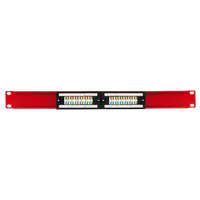
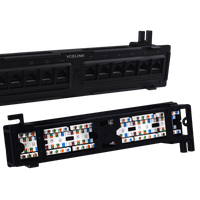
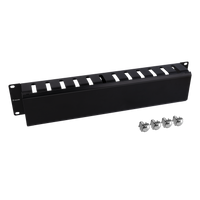
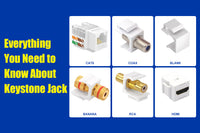
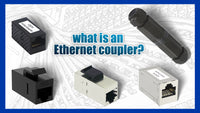

Be the first one to comment.
Leave a comment